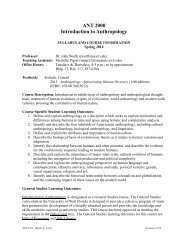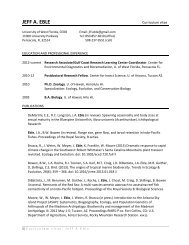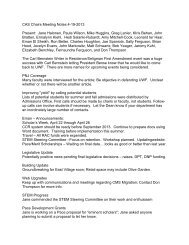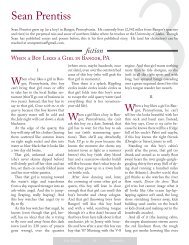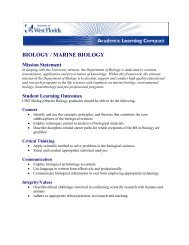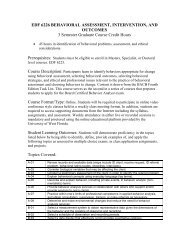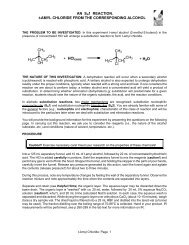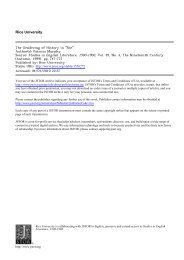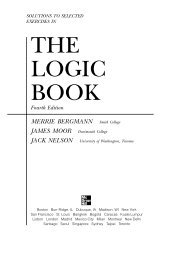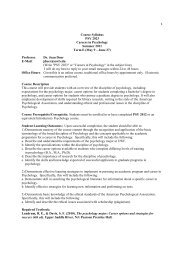1 Experiment #2: Telescopes And Microscopes Purpose: To ...
1 Experiment #2: Telescopes And Microscopes Purpose: To ...
1 Experiment #2: Telescopes And Microscopes Purpose: To ...
You also want an ePaper? Increase the reach of your titles
YUMPU automatically turns print PDFs into web optimized ePapers that Google loves.
3. Next, build a terrestial telescope by using the weaker of your two converging lenses as the<br />
objective and the diverging lens as the eyepiece, separating the two lenses by the difference in<br />
the absolute values of their focal lengths. Again bring your eye up close to the eyepiece and look<br />
through it at a distant object, and slightly adjust the distance between the two lenses to focus the<br />
telescope. This time things should appear upright.<br />
4. Repeat step 2 for your terrestial telescope.<br />
5. Finally, build a microscope according to the following procedure using the two converging<br />
lenses but now the objective should be the strongest lens, unlike for the two telescopes. First<br />
mount the ruled translucent scale a few centimeters beyond the (secondary) focal point of the<br />
objective lens, to serve as an object to examine; measure the distance o between this object and<br />
the objective. Then use the thin lens equation<br />
1 1i 1<br />
+ =<br />
o fobj to compute the distance i from the objective to the image produced by it. Now position the<br />
eyepiece at a distance from the objective equal to i + f eye. Finally, bring your eye up close to the<br />
eyepiece (with your glasses on) and slightly adjust the position of the ruled scale until you see a<br />
focused image of it. (You and your partner may have to each do this separately, since your eyes<br />
may be slightly different.) Note that the microscope will invert the image relative to the object.<br />
6. Determine the experimental magnification of your microscope as follows. Look at an adjacent<br />
pair of rulings on the object screen through the microscope, back your eye up slightly, and use a<br />
felt pen to mark the apparent positions of the two rulings directly on the eyepiece lens. Now<br />
measure the separation between your two marks with a ruler. Also measure the actual separation<br />
between the two rulings on the screen. The ratio of these two separations is the magnification.<br />
7. <strong>To</strong> get the theoretical magnification of the microscope, first measure your near point distance.<br />
<strong>To</strong> do so, hold up a plastic ruler to the bridge of your nose with the zero end at your nose.<br />
Gradually bring a small object which has writing on it along the ruler toward your eye (with your<br />
glasses on). Find the shortest distance at which you can still comfortably focus on the writing<br />
(i.e., without having to strain so much that you get a headache: be reasonable!). Use your near<br />
point distance n to compute the theoretical magnification as M = (L f o f e ) n /( f o f e )<br />
where L is the measured distance between the two lenses. Compare to the experimental<br />
magnification found in step 6.<br />
Supplementary Problem:<br />
A converging lens and a diverging lens both have a focal length whose absolute value is 10 cm<br />
and they are separated from each other by 10 cm. An object is placed 15 cm away from the<br />
diverging lens (i.e., 25 cm away from the converging lens). Where is the image formed by the<br />
converging lens located? Is it real or virtual? Is it erect or inverted? How many times bigger or<br />
smaller is it than the object (i.e., what is the magnification)?<br />
8



